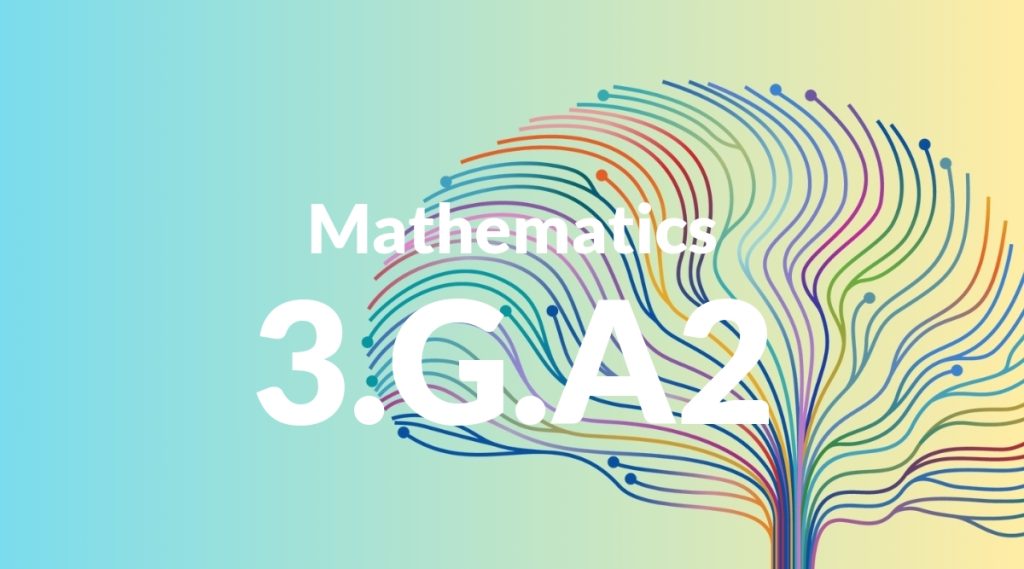Standard: 3.G.A2 – Partition shapes into parts with equal areas. Express the area of each part as a unit fraction of the whole. For example, partition a shape into 4 parts with equal area, and describe the area of each part as 1/4 of the area of the shape.
Grade level: Grade 3
Subject: Mathematics
Domain: Geometry
Teacher Overview
This standard focuses on students’ ability to partition shapes into parts with equal areas and express those areas as unit fractions of the whole. It is crucial as it builds foundational skills in understanding fractions and spatial reasoning, which are essential for more advanced mathematical concepts. Students should be comfortable with basic fractions and familiar with simple geometric shapes. They should also have some experience in dividing objects into parts, even if not perfectly equal.
After mastering this standard, students will be able to handle more complex fractions and geometric problems, including calculating areas and perimeters of irregular shapes.
Common Misconception 1
A common misconception is that equal parts must look the same in shape. This is incorrect because parts can have different shapes but still cover the same area.
Intervention 1
To address this, provide various examples and activities where students partition shapes differently, ensuring each part has the same area despite different shapes.
Common Misconception 2
Another misconception is that the number of parts alone determines equality. Students might think that simply dividing a shape into more parts means those parts are equal.
Intervention 2
Use visual aids and hands-on activities to emphasize that equal areas, not just the number of parts, define equality. Compare different partitions to show the importance of area.
Prerequisite Knowledge
Students should understand basic fractions and have experience with simple shapes. They should be able to recognize and describe shapes such as squares, rectangles, and circles.
Subsequent Knowledge
Students will develop the ability to understand more complex fractions and their applications. They will also learn to calculate areas and perimeters of irregular shapes.
Instructional Activities
- Use grid paper to partition shapes into equal areas.
- Create fraction puzzles where students match parts to the whole.
- Use manipulatives like fraction circles or bars to visualize equal areas.
- Incorporate art projects, such as creating mosaics with equal-area tiles.
- Conduct real-life activities, like dividing food items into equal portions.




